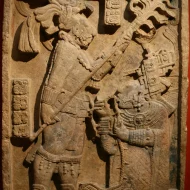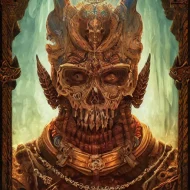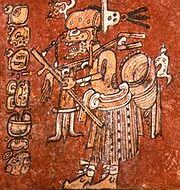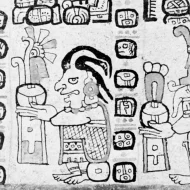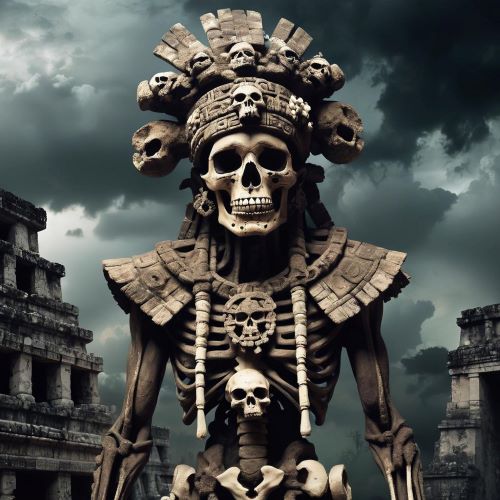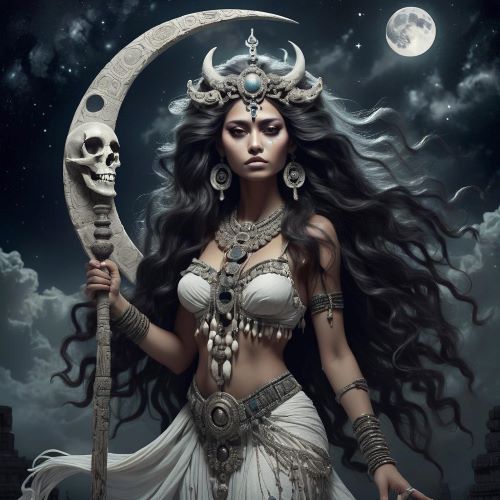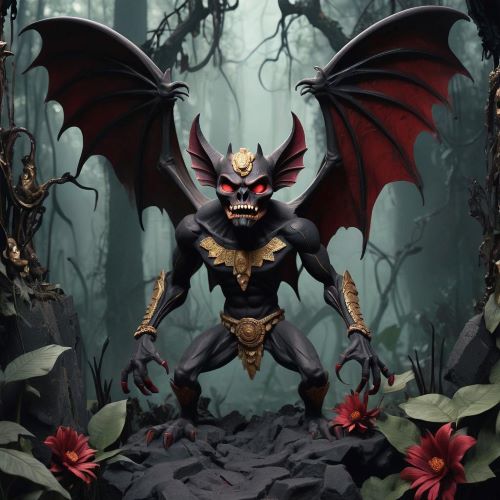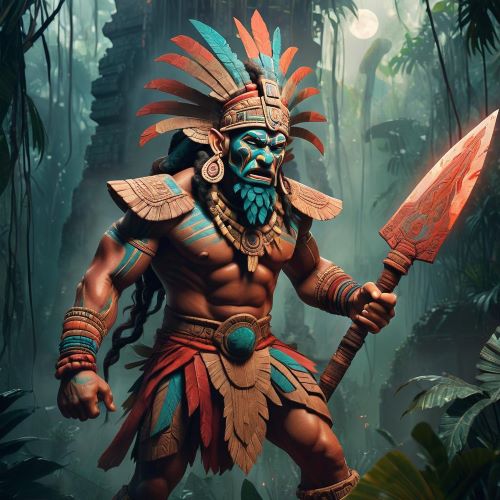Cizin : God of Death
Listen
At a glance
| Description | |
|---|---|
| Origin | Mayan Mythology |
| Classification | Gods |
| Family Members | N/A |
| Region | Mexico, Belize, Guatemala |
| Associated With | Death, Earthquakes |
Cizin
Introduction
Cizin, alternatively referred to as Ah Cizin, stands as a prominent figure in the realm of Mayan mythology. This deity is specifically attributed to the domains of death and earthquakes, firmly establishing his dominion over two powerful natural forces. As the sovereign of the subterranean realm inhabited by the deceased, Cizin is inherently tied to the potent and destructive force of death. Renowned as the God of the Underworld, Cizin plays a pivotal role within the intricate framework of Mayan cosmology, symbolizing the duality of destructive and regenerative forces present in the natural world.
Physical Traits
Cizin’s iconography commonly portrays him with a reptilian or skeletal visage, aligning his visual representation with the themes of death and destruction that define his character. This formidable image serves as a stark reminder of the devastation he wields. His depiction as a fearsome figure is marked by distinctive physical attributes that profoundly symbolize his role as the God of the Underworld. Perhaps most striking is his affiliation with fire, often portrayed with a fiery head and a skeletal countenance, symbolizing the infernal flames that characterize the underworld. This imagery effectively underscores his destructive capabilities, akin to fire’s ability to consume and purify, mirroring the transformative nature of death.
In many depictions, Cizin is illustrated clutching a brazier or torch, a visual motif that underscores his intimate connection to the element of fire. His attire typically consists of a loincloth, adorned with bone ornaments that further underscore his dominion over the realm of death and the skeletal remnants of the departed.
In certain representations, Cizin sports a serpent headdress, a powerful symbol of his association with the serpentine forces inhabiting the underworld. Serpents held great significance within Mayan culture, and their presence in Cizin’s imagery reinforces his close connection to the realm of the deceased, thereby reinforcing his role as the God of the Underworld.
Family
Within the tapestry of Mayan mythology, Cizin’s familial bonds link him to Nohochacyum and the Bacabs, underscoring the intricate web of relationships that define the Mayan pantheon and the multifaceted nature of their mythology. Of these connections, one of the most notable lies in his kinship with the maize god, whose narrative is intricately woven into the tapestry of creation and the cyclical flow of life. In the complex hierarchy of Mayan cosmology, Cizin stands as the brother of the maize god, embodying the delicate equilibrium between the forces of life and death.
Furthermore, Cizin shares a profound connection with Chaac, the deity presiding over rain and storms, revealing the interplay between these divine entities. This interwoven relationship among gods like Cizin and Chaac highlights the Mayan belief in the cyclical and interconnected essence of the natural elements and the broader cosmos. It reinforces their understanding of the intricate dance of these fundamental forces in shaping their world and belief system. However, the exact details of these familial bonds are still debated upon.
Other names
Cizin is known by several names, reflecting the diverse aspects of his character and the various regions of the Mayan civilization. Some of these names include Kisin, Ah Puch, Xibalba, Yum Cimil, Hunhau, Ah Puchah, Au Puch, Cum Hau, Eopuco, Hu Ahau, Tzontemoc, Ahpuch, and Ahal Puch. To the Yucatán Mayas, he was known as Hun-Came and Vucub-Came. The name Cizin probably means “stench”, coming from the root “ciz” which means flatulence
Powers and Abilities
In his capacity as the god of death and earthquakes, Cizin wields formidable power, embodying the potent and destructive forces associated with mortality. His dominion over death enables him to inflict great devastation2. According to Lacandon mythology, Cizin’s role in the journey of a departed soul is vividly described. Upon the soul’s passing, Cizin is believed to subject it to a fiery ordeal, where he burns it both through his mouth and anus. As the soul expresses its distress, Cizin responds by immersing it in cold water, intensifying its anguish and ultimately leading to its disintegration. This harrowing narrative reflects the intricate and often treacherous path that souls are believed to tread in the afterlife.
Cizin’s significance extends to Mayan sacrificial rituals, where his invocation played a central role, particularly in ceremonies involving human offerings. These rituals were conducted with the aim of appeasing the gods and preserving the equilibrium between the earthly and spiritual domains. Cizin’s presence in these ceremonies underscored the profound connection between human existence, the divine, and the delicate harmony that bound them together, emphasizing the integral role he played in Mayan religious practices.
Modern Day Influence
Cizin’s influence transcends the boundaries of ancient Mayan culture, leaving a lasting imprint on modern popular culture. In the realm of video games, Cizin takes on a new identity as the playable god “Ah Puch” within the 2014 free-to-play multiplayer online battle arena game Smite, representing a crucial figure in the Mayan pantheon. Moreover, the 2021 animated mini-series “Maya and the Three” features Ah Puch in a supporting role, breathing life into the character. These contemporary portrayals of Cizin in popular media serve as a testament to the enduring resonance of Mayan mythology within our modern cultural landscape.
Cizin’s iconic imagery, marked by his blazing cranium and skeletal countenance, continues to captivate the imaginations of artists and creators. This visual representation has become a powerful symbol of death and transformation in contemporary art, artfully merging the timeless appeal of ancient Mayan iconography with the creative expressions of our modern world. Through this fusion, the spirit of Cizin remains vivid and alive, ensuring his legacy endures as a source of artistic inspiration and cultural significance.
Related Images
Frequently Asked Questions
What is lorem Ipsum?
I am text block. Click edit button to change this text. Lorem ipsum dolor sit amet, consectetur adipiscing elit. Ut elit tellus, luctus nec ullamcorper mattis, pulvinar dapibus leo.
What is lorem Ipsum?
I am text block. Click edit button to change this text. Lorem ipsum dolor sit amet, consectetur adipiscing elit. Ut elit tellus, luctus nec ullamcorper mattis, pulvinar dapibus leo.
What is lorem Ipsum?
I am text block. Click edit button to change this text. Lorem ipsum dolor sit amet, consectetur adipiscing elit. Ut elit tellus, luctus nec ullamcorper mattis, pulvinar dapibus leo.
What is lorem Ipsum?
I am text block. Click edit button to change this text. Lorem ipsum dolor sit amet, consectetur adipiscing elit. Ut elit tellus, luctus nec ullamcorper mattis, pulvinar dapibus leo.
What is lorem Ipsum?
I am text block. Click edit button to change this text. Lorem ipsum dolor sit amet, consectetur adipiscing elit. Ut elit tellus, luctus nec ullamcorper mattis, pulvinar dapibus leo.

